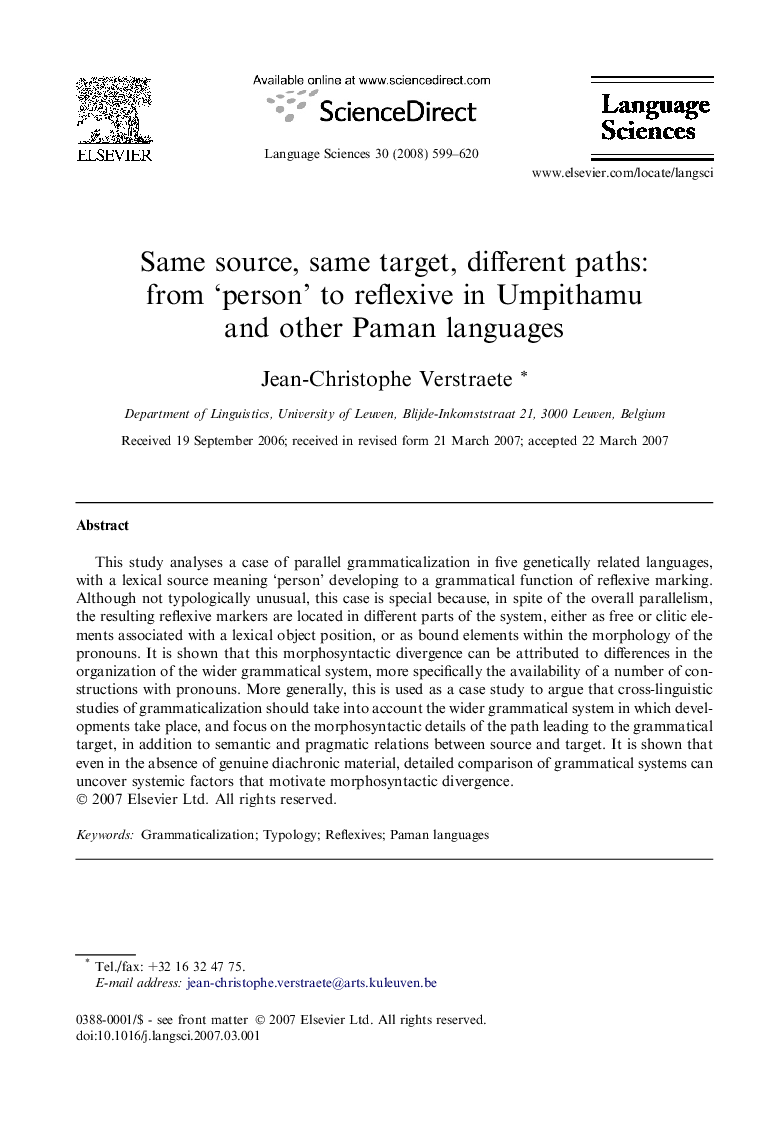| Article ID | Journal | Published Year | Pages | File Type |
|---|---|---|---|---|
| 1103622 | Language Sciences | 2008 | 22 Pages |
This study analyses a case of parallel grammaticalization in five genetically related languages, with a lexical source meaning ‘person’ developing to a grammatical function of reflexive marking. Although not typologically unusual, this case is special because, in spite of the overall parallelism, the resulting reflexive markers are located in different parts of the system, either as free or clitic elements associated with a lexical object position, or as bound elements within the morphology of the pronouns. It is shown that this morphosyntactic divergence can be attributed to differences in the organization of the wider grammatical system, more specifically the availability of a number of constructions with pronouns. More generally, this is used as a case study to argue that cross-linguistic studies of grammaticalization should take into account the wider grammatical system in which developments take place, and focus on the morphosyntactic details of the path leading to the grammatical target, in addition to semantic and pragmatic relations between source and target. It is shown that even in the absence of genuine diachronic material, detailed comparison of grammatical systems can uncover systemic factors that motivate morphosyntactic divergence.
